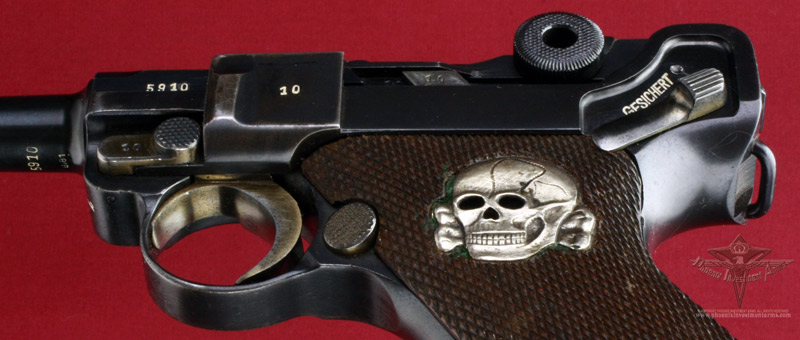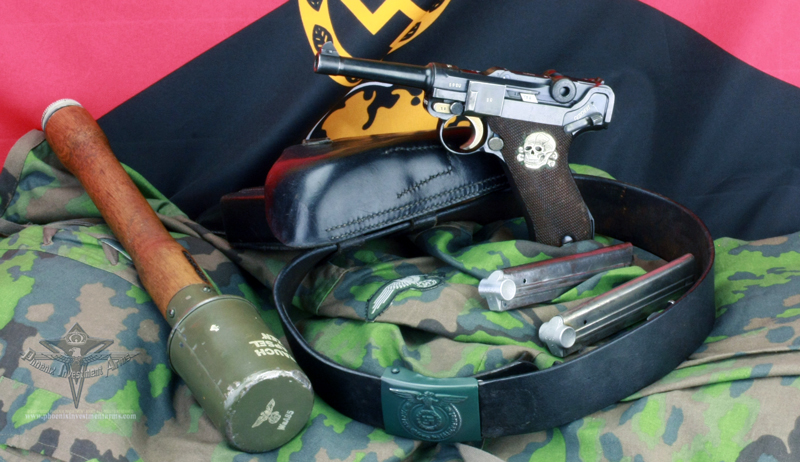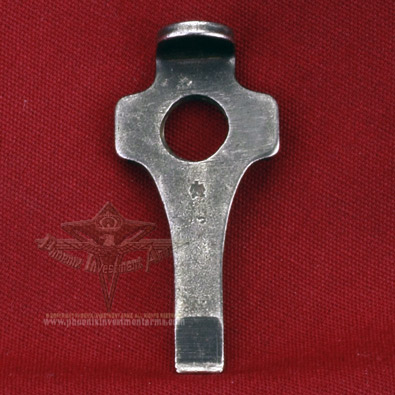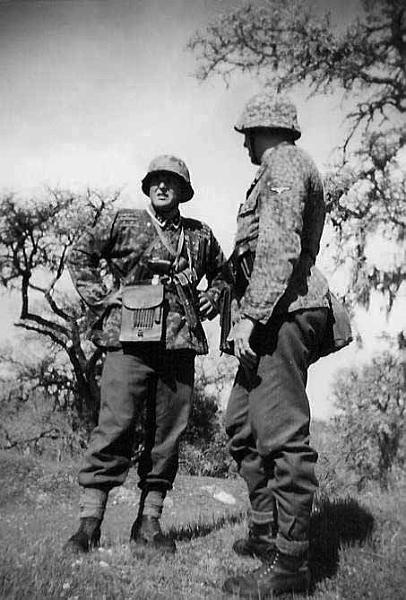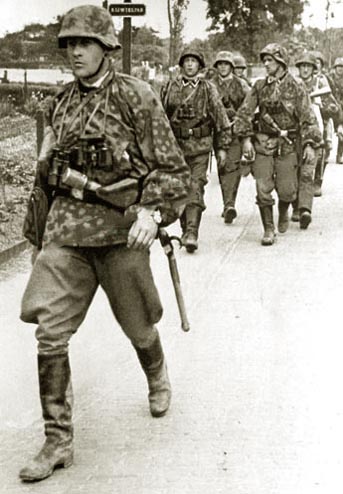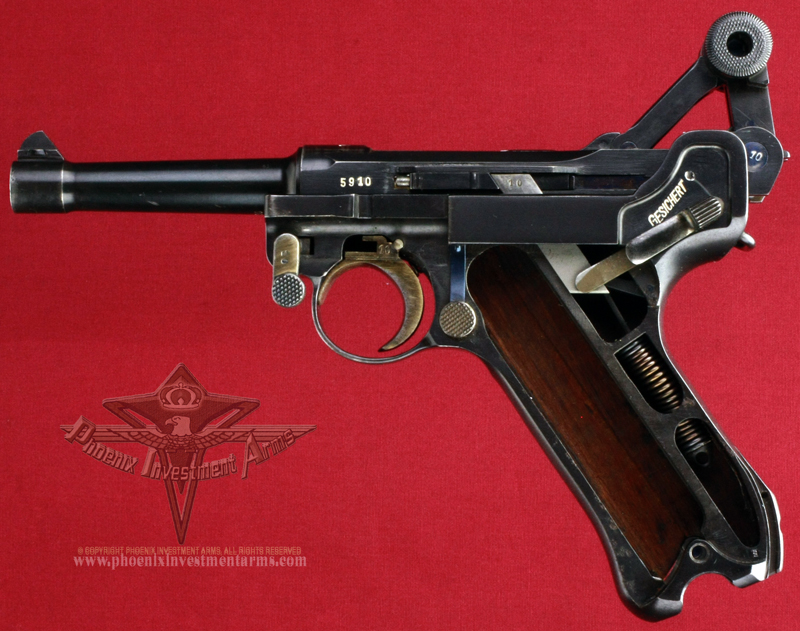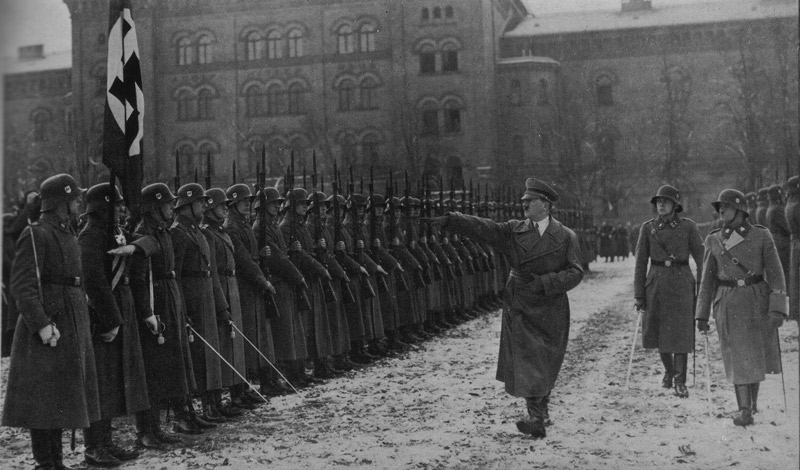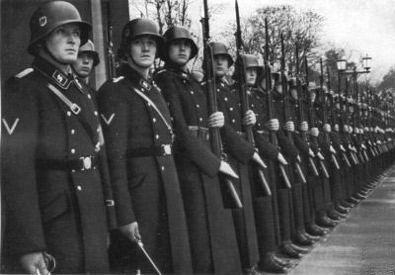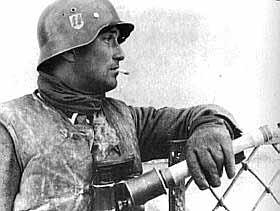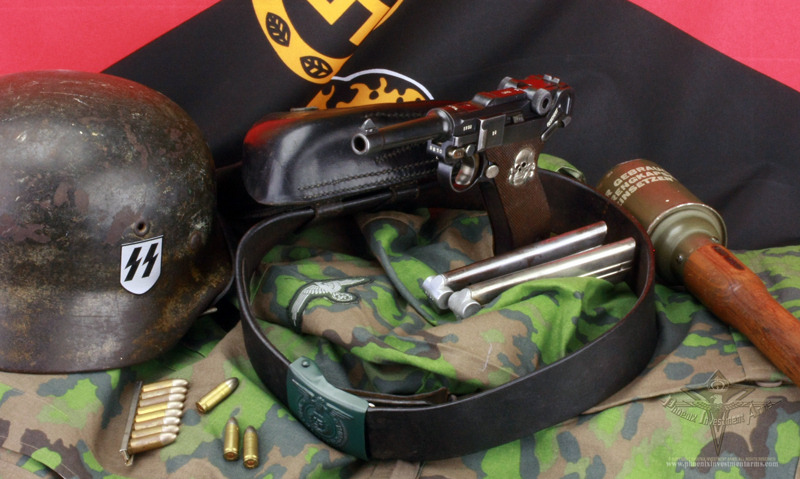Above Left a Luger armed soldier being awarded the Iron Cross. Above Right: A recruiting post for the Waffen-SS.
In contrast to the black-uniformed Allgemeine-SS, the political wing of the SS, the military wing, the Waffen-SS evolved into a second German army aside the regular one, the Wehrmacht, operating in tandem with them. The Waffen-SS were encouraged to use confiscated weapons and individual initiative was rewarded. These were committed troops with high loyalty and honor.
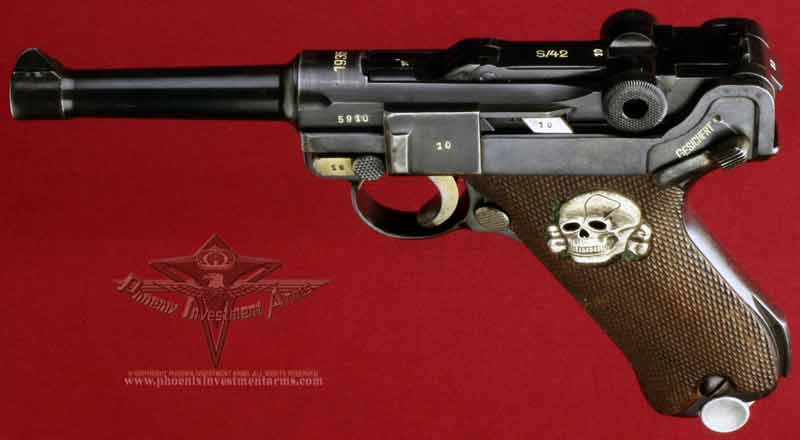
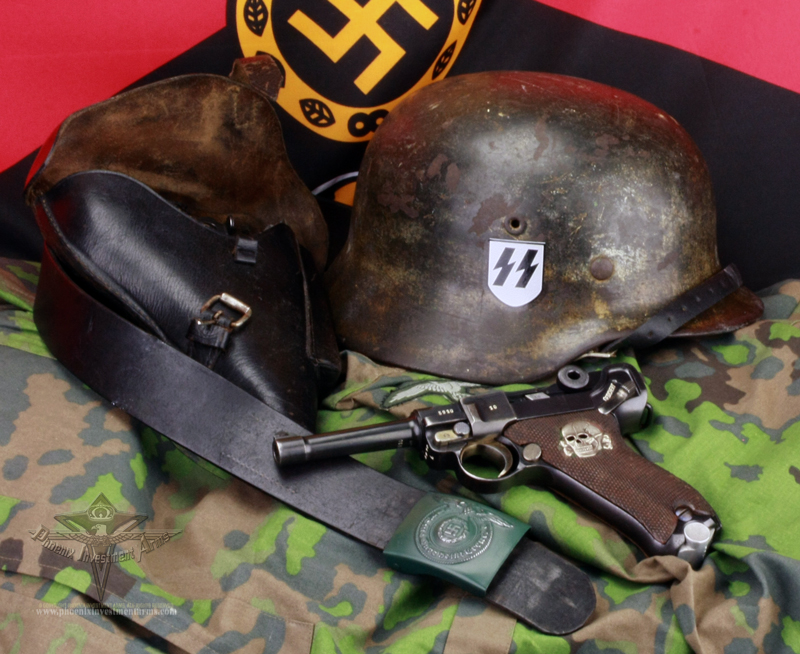
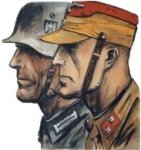 The
Waffen-SS, formed in 1940, was the true military formation of the
larger SS, and as such, it is the main focus of this section. Formed
from the SS-Verfungstruppe after the Campaign in France in 1940, the
Waffen-SS would become an elite military formation of nearly 600,000
men by the time WWII was over. Its units would spearhead some of the
most crucial battles of WWII while its men would shoulder some of
the most difficult and daunting combat operations of all the units
in the German military. The Waffen-SS is sometimes thought of as the
4th branch of the German Wehrmacht (Heer, Luftwaffe, Kriegsmarine)
as in the field it came under the direct tactical control of the
OKW, although this notion is technically incorrect as strategic
control remained within the hands of the SS. To this day the actions
of the Waffen-SS and its former members are vilified for ultimately
being a part of the larger structure of the political Allgemeine-SS,
regardless of the fact that the Waffen-SS was a front line combat
organization.
The
Waffen-SS, formed in 1940, was the true military formation of the
larger SS, and as such, it is the main focus of this section. Formed
from the SS-Verfungstruppe after the Campaign in France in 1940, the
Waffen-SS would become an elite military formation of nearly 600,000
men by the time WWII was over. Its units would spearhead some of the
most crucial battles of WWII while its men would shoulder some of
the most difficult and daunting combat operations of all the units
in the German military. The Waffen-SS is sometimes thought of as the
4th branch of the German Wehrmacht (Heer, Luftwaffe, Kriegsmarine)
as in the field it came under the direct tactical control of the
OKW, although this notion is technically incorrect as strategic
control remained within the hands of the SS. To this day the actions
of the Waffen-SS and its former members are vilified for ultimately
being a part of the larger structure of the political Allgemeine-SS,
regardless of the fact that the Waffen-SS was a front line combat
organization. 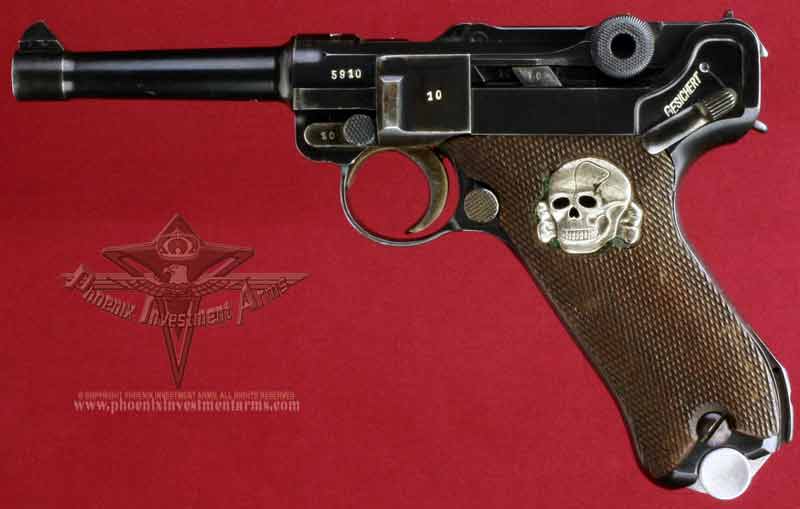
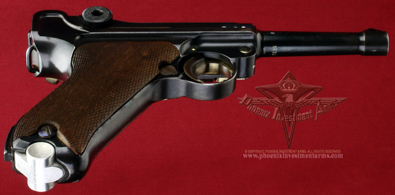
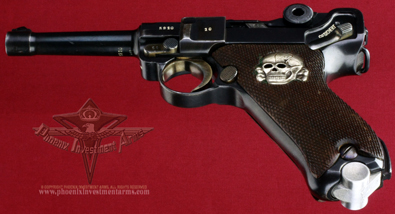

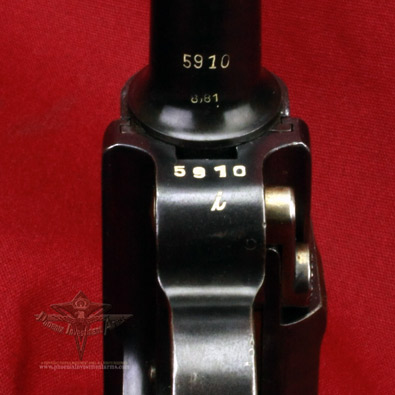

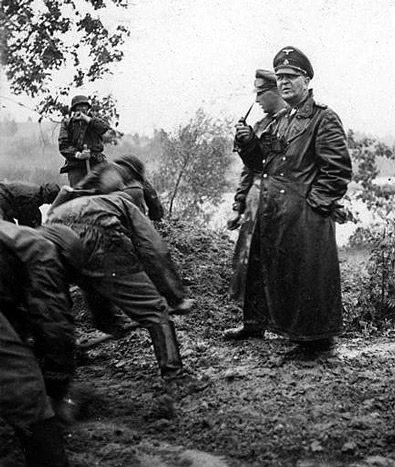
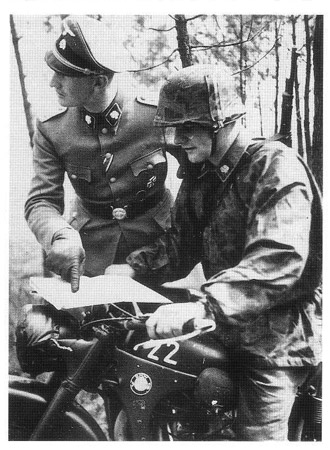



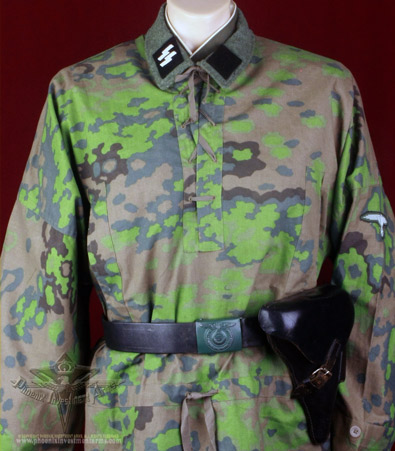
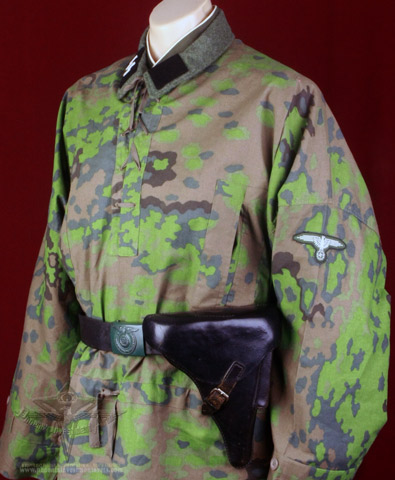
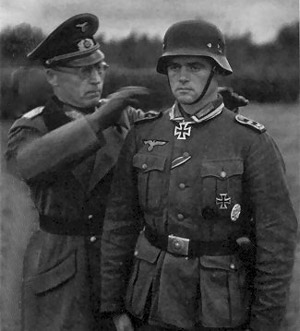
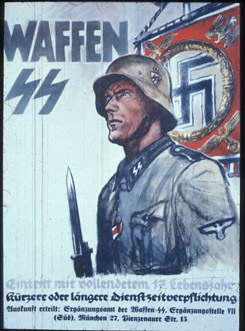
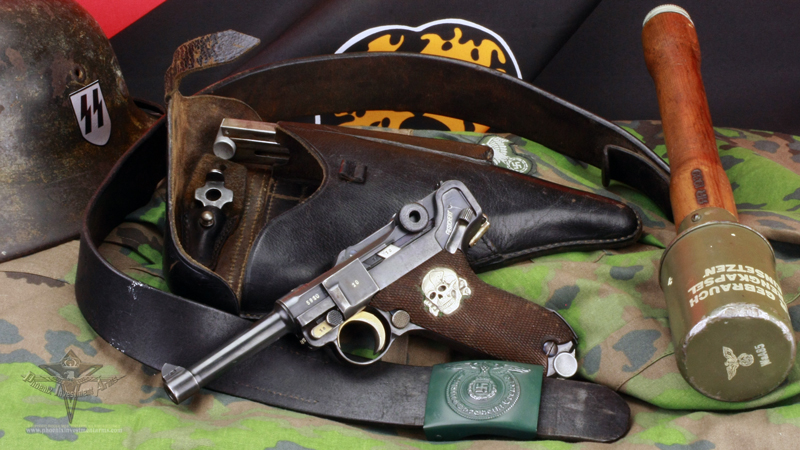





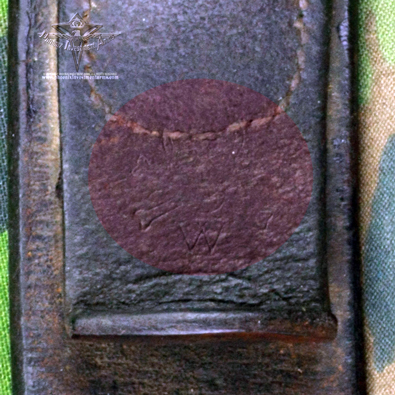
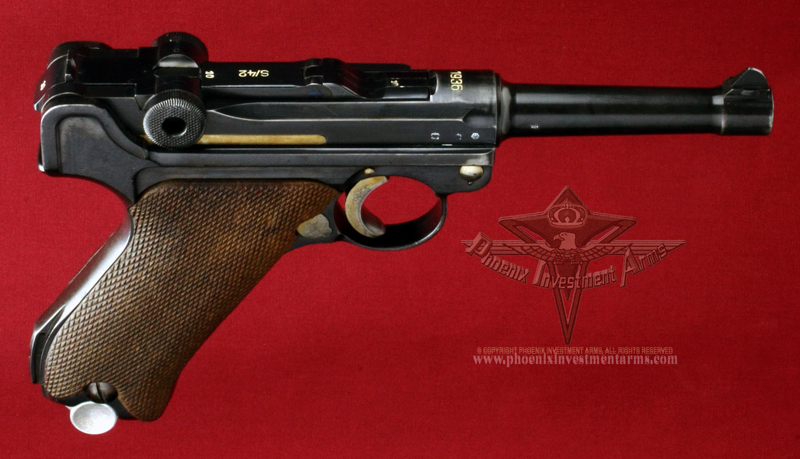
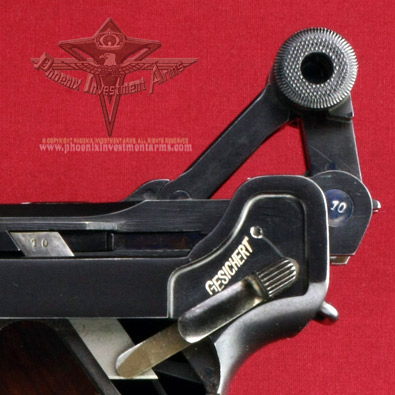


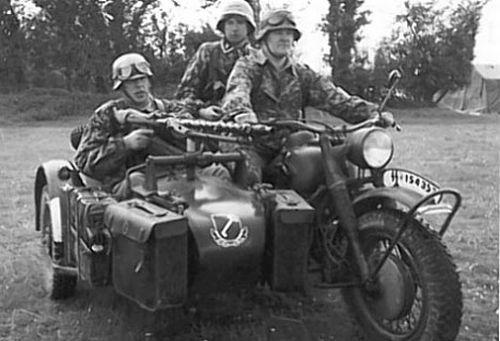
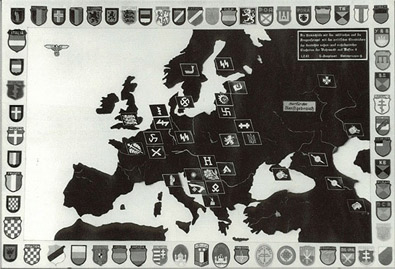 The
Waffen-SS (German for "Armed SS", literally "Weapons SS") was
the combat arm of the Schutzstaffel ("Protective
Squadron") or SS, an organ of the Nazi Party. The Waffen-SS saw
action throughout World War II and grew from three regiments to over
38 divisions, and served alongside the Wehrmacht Heer regular army,
but was never formally part of it. It was Adolf Hitler's will that
the Waffen-SS never be integrated into the army: it was to remain
the armed wing of the Party and to become an elite police force once
the war was over.
The
Waffen-SS (German for "Armed SS", literally "Weapons SS") was
the combat arm of the Schutzstaffel ("Protective
Squadron") or SS, an organ of the Nazi Party. The Waffen-SS saw
action throughout World War II and grew from three regiments to over
38 divisions, and served alongside the Wehrmacht Heer regular army,
but was never formally part of it. It was Adolf Hitler's will that
the Waffen-SS never be integrated into the army: it was to remain
the armed wing of the Party and to become an elite police force once
the war was over.